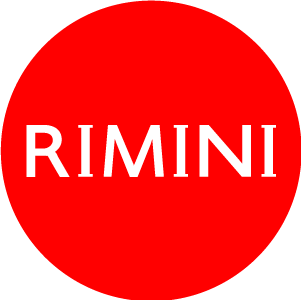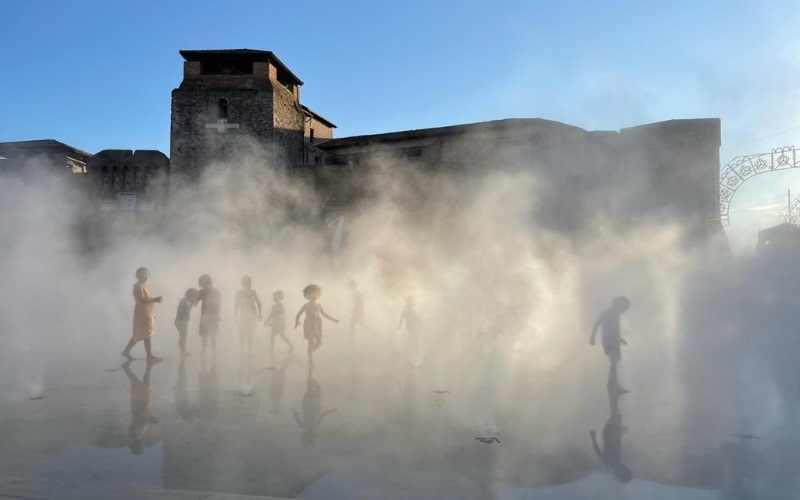
Guida pratica
Fellini Museum
The largest and most innovative museum in the world dedicated to the genius of Federico Fellini and his poetic legacy, as well as his artistic and visual references to the art of all times. This is the International Federico Fellini Museum, a museum that does not intend to interpret Fellini's cinema as a finished work to be paid homage to, but as the key to "everything is imagined", the possibility of linking past and present, classical and contemporary art, capable of giving back everything that cinema has sought to be since its origin and that Fellini's films express in the most complete way: amazement, fantasy, spectacle, fun.
The Museum is divided into three sections. Sismondo Castle, the 15th century fortress that Filippo Brunelleschi contributed to building; Palazzo del Fulgor, a recently restored 18th century building (Palazzo Valloni), whose ground floor houses the legendary Fulgor cinema immortalised in Amarcord, while the upper floors are dedicated to information, study and research; and the third and last section consisting of a large urban area, Malatesta Square, a real Piazza dei Sogni (the square of dreams) which, through a path of Fellini's installations, acts not only as a connective tissue but also as a creative 'fil rouge' between these two buildings of extraordinary architectural and symbolic value, to become a visual and interactive experience that characterises the spaces of daily relations for residents and guests.
In a few words the Fellini Museum is a “museum that comes out of the museum”, operating on different levels and exceeding its own spaces; it fires the imagination and in a single conceptual and spatial whole with Piazza Malatesta, creating a composite path where the narrations create a participatory immersive and diffused museum.
Thanks to the contribution from important national public and private audio-visual archives and from nearly all the producers and owners of Fellini feature films, you can see films, documentaries, interviews, screenplay, scripts, costumes and props, as well as drawings by Fellini and technological solutions developed to involve senses and the mind.
In the sixteen rooms of this renaissance castle, which offer a panoramic view of the most relevant aspects of the director’s work, you can immerse yourself in Fellini culture, and savour his profundity and vision.
The exhibition begins with a room dedicated to the output of Federico Fellini’s earliest days when he worked as a satirical writer, a journalist, a cartoonist and caricaturist (first room). The sheets of paper, strung up in the middle of the area, symbolise Fellini’s youthful work and are a reminder of how paper documents were stored by “stabbing” a number of sheets with needle and thread. The iconic look of Giulietta Masina soon appears, and it is to her that the second room is dedicated, with close-ups of her as Gelsomina and in other roles in a kind of continuous and animated frieze. The cinema tool that most reflects Fellini’s expressiveness is in the third room: an extendable dolly arm. The exhibition continues with a range of different visual and innovative communication techniques, like the magical presence of elements from nature – the sea, the moon, but also small hands or deciduous leaves, wind or snow. The fourth room is dedicated to “The Sea in Rimini” and features four displays; the fifth room focuses on La Dolce Vita, the film that manages to capture the fragility of the ostensible and triumphant Italian economic boom, showcasing the dichotomy between reason and desire, social conventions and human impulses. The visit continues with the sixth room, which addresses rehearsals and aspiring actors who wrote to Fellini hoping for a part in his films. A magic mirror in which visitors are reflected activates a gallery of pictures of the legendary envelopes where Fellini kept pictures and correspondence with extras. It is a journey through the imagination and secret aspirations of many, which was made possible thanks to work with the Fondation Fellini pour le Cinéma of Sion. Costumes, like those from “Fellini’s Casanova” that won Danilo Donati his second Oscar, take centre stage in the seventh room: like the traditional full-length mirrors that tailors use divided to refract light. The installation has three monitors which show immobile costumes in movement. Ranging from fashion to media, the eighth room is the one with the amazing adverts, with both commercial films made for companies and completely invented scenes for films being projected. The ninth room has been designed as a space in which to take a break while visiting the exhibition, with the voice of the poet Rosita Copioli discoursing on Fellini’s interest in literature and comics, and his passion for occult science and the esoteric. The idea of writing down and designing one’s dreams comes in part from this, which was suggested to Fellini by the psychoanalyst Ernst Bernhard: the tenth room means you can flick through – virtually – the book of your dreams, using the lightness of a visitor’s breath, reflected by having a feather hung on the board with one of the original volumes. Next comes the music chamber, the eleventh room, which emphasises the connection between film and sound: an enormous steel ball like the one in the film “Orchestra Rehearsal) is dedicated to composers and musicians, such as the maestro Nino Rota who charmed Fellini in 1952 in “The White Sheik” and who worked with him until 1979. Then, in the twelfth room, there is a confessional created by four structures that collect together first-hand accounts from people who worked with him and professionals who accompanied Fellini during his career. The idea of time that becomes history is symbolised by the rhythm of a swing, which like a pendulum or a metronome, sways in the middle of the thirteenth room. The fourteenth room, dedicated to the Fellini photographic archive, brought to life in virtual collections, is also linked to the passing of time: on one side there is the invention of the figure of the “paparazzi”, on the other, pictures taken while the films were being shot, and photographs that have become famous around the world, copied and reproduced. In the fifteenth room there is a virtual display of works written about the director and his cinematographic work, like an imaginary library as big as the world. The exhibition ends in the sixteenth room, with the “Diario dello Tsunami Fellini” (Diary of the Fellini Tsunami).
The project was entrusted to a group of companies led by Lumiére & Co., of which Studio Azzurro is a part. The conception of the entire installation of Castel Sismondo and Palazzo del Fulgor is characterized by an immersive multimedia installation project of strong participatory value for the visitor, often called into question by the narrative solutions devised for the itinerary, curated by Marco Bertozzi and Anna Villari.
All the visual identity and graphics of the Fellini Museum are created by Studio FM in Milan.
Partners of the project, which received the patronage of Rai, are Visit Romagna and APT Servizi Emilia-Romagna with Hera Servizi Gold sponsor.
OPENING: The Museum has open its doors to the public for a special, long weekend, started on Thursday 19 August 2021, with official opening, shows and free guided tours to the rooms of the castle. And with the grand opening of the Fulgor Palace, on December 12th, the Fellini Museum was completed and handed over to the city.
Visit to the Museum can be booked on the website (www.fellinimuseum.it) or directly at the ticket offices at the entrance, during the opening hours of the Museums.

©2016-2023 Assessorato al turismo / Comune di Rimini, Piazzale Fellini 3 47921 - Rimini - +39 0541 704587 / Ufficio Informazioni Turistiche (IAT) +39 0541 53399 / fax +39 0541 56598 / Statistiche web


